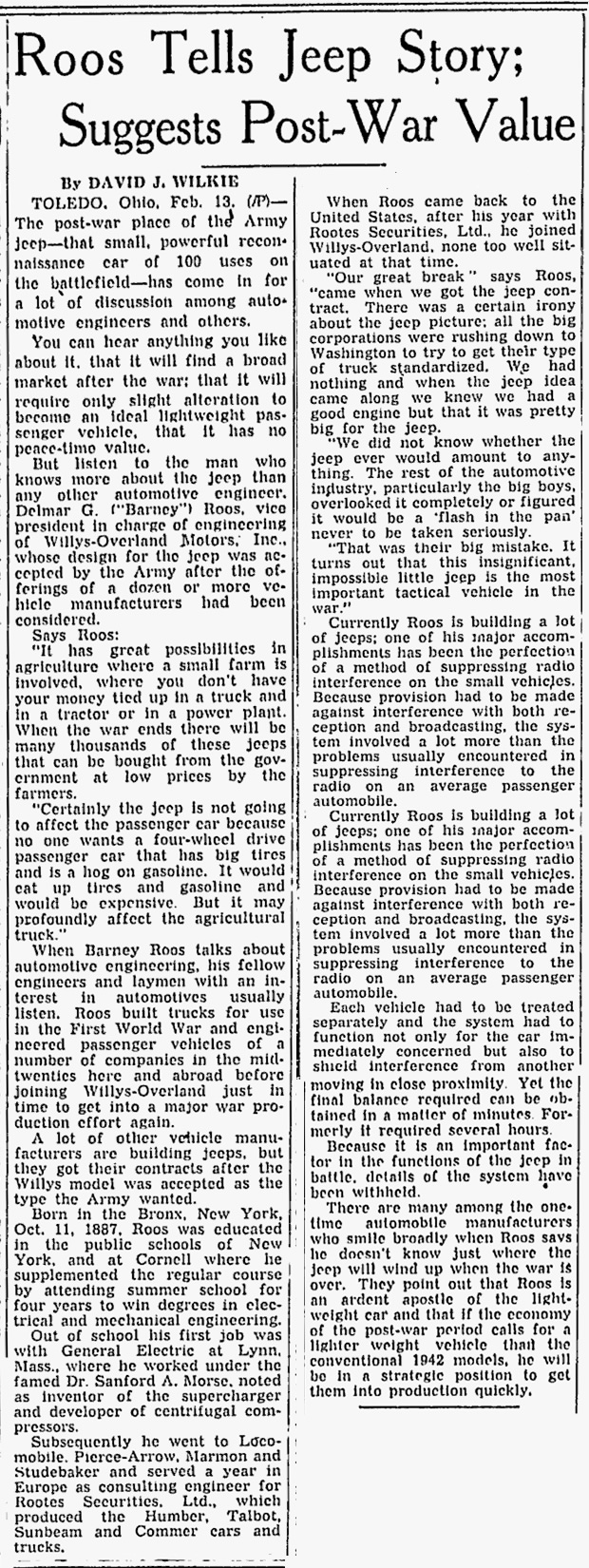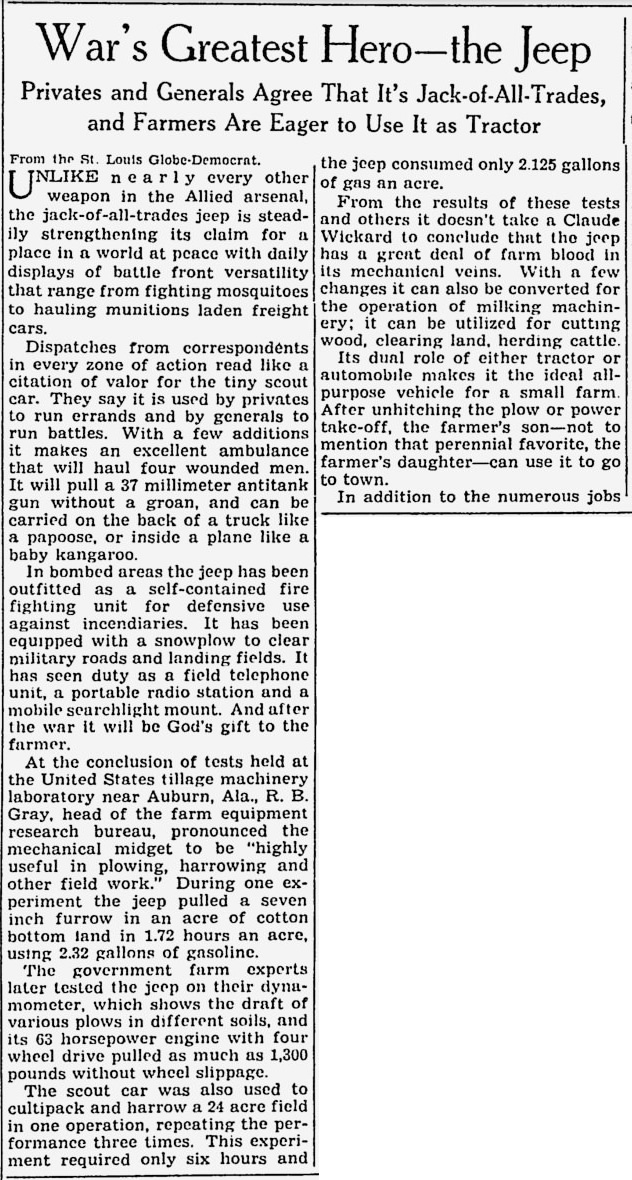
This photo appeared in a September 06, 1943, promoting the jeep as a tractor.
A 1943 an interview with Barney Roos appeared in a Palm Beach newspaper that explored his automotive history. In the article, Roos promoted the jeep as a practical alternative to the standard tractor. Another article in the Milwaukee Journal seconded farmer’s optimism regarding the jeep (there were many articles promoting the jeep as a farm tractor. Here’s a September 06, 1943 article).
A year later, two Canadian Agricultural specialists were much less confident in the jeep’s potential, suggesting the jeep drove to fast, the transmission was not strong enough, and the jeep lacked power to be a good farm vehicle. Willys Overland must have agreed with those researchers, because they addressed those issues by installing lower gears, which both added power and slowed down the jeep. They also updated the transmission to the T-90.
I’ll begin with the 1944 Canadian article first as that is comparatively short.
Here is the 1943 Barney Roos article:
1943 article in the Milwaukee Journal:




I suppose during WW2 that the only people that recognized the primary value of the jeep as an offroad / private property fun vehicle were the GI’s that drove them everywhere. The main sales pitch for jeeps as a valuable agricultural vehicle just didn’t materialize in the long run like they thought it would.
Todd Paisley owns at least one of the Auburn Test Jeeps.
For those that are really fanatics on Roos or other Willys executives, I discovered that when he worked for Locomobile in Bridgeport CT, he actually lived on Toilsome Ave in Norwalk, CT.
I used to walk by his house on my way to Boy Scout meetings without knowing it. (45 years after he sold it).
The internet is an amazing tool. The real estate listings for the house and the name of his housekeepers were all available.
As for the articles, they did a good job making it sound un-rehearsed. But the script is in the records of the Automotive War council, and Bill Howlett of Willys wrote it…
My father got a jeep in 1945 (I was an infant). He taught agriculture to returning vets and the jeep might have been part of that program. Anyway it was found it was a poor tractor, other than to pull hay wagons. The turning radius was more a problem then things mentioned. The Ford 8N had individual brakes allowing turning within it’s length – a needed feature with 3 point systems.